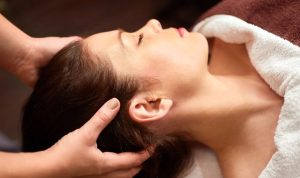With the rise in popularity of alternative therapies, craniosacral therapy (CST) via a Craniosacral therapist in London is more widely known and enjoyed. It’s an approach that uses a soft touch that leads to deeply helpful benefits.
Benefits such as relaxation that might not sound like a big deal, but for the person who is prone to anxiety and insomnia, this is huge. For a person whose entire life is inhibited and impacted by their ability to function to their highest performing self, regular CST has wide rippling effects that spread out significantly.
What Are the 10 Surprising Benefits of Craniosacral Therapy?

Without further ado, let’s jump straight into ten of the greatest benefits of CST:
1. Deep Relaxation
Perhaps the most well-renowned effect of CST is how it deeply impacts a person’s ability to relax. In a world where daily stresses are particularly poignant and productivity is a commodity in itself, relaxation isn’t always a focus.
Relaxation is, though, so important. Craniosacral therapy inspires relaxation by releasing tension in the craniosacral fluid around the spine and nervous system. This is paramount in supporting the nervous system, brain and heart functioning. When these parts of the body are supported, relaxation comes easier.
CST also works by working with the fascia, the connective tissue and membrane around organs and nerves. The therapist eases blockages in these tissues leading to further feelings of calm.
2. Reduced Headaches/Migraines
Headaches and migraines have various causes. If a doctor has confirmed causes are linked to stress and tension then craniosacral therapy is a valuable go-to method of treatment. One study reported that CST was associated with pain reduction and reduced frequency of migraines.
During sessions, we work to ease tension around the head, neck, and jaw, all of which can lead to headaches. A weekly or fortnightly session makes a great difference for many clients in managing symptoms.
3. Better Sleep
With the heightened ability to relax that CST leads to, it’s no surprise that this therapy is also known to reduce tensions through the mind and body. When the parasympathetic nervous system is activated, you’re in a better position to be able to come by sleep and to have better quality sleep for longer.
It’s advisable to have CST alongside developing other behaviours that promote sleep. For instance, reducing screen time in the evening. If you have a craniosacral therapy session at 5pm, but go on to spend 2 hours doom scrolling on your mobile phone, the benefits of CST on the nervous system could be impaired by the phone activity.
4. Emotional Release
Another big reason people seek craniosacral therapy is because of its reputation for treating emotional blockages. It doesn’t take five minutes to go online and find lots of personal anecdotes of people reporting how CST has supported emotional release.
In sessions, clients enter the “rest and digest” state (opposite from the highly anxious “fight or flight”). This helps facilitate the shifting of emotions. When leaving, clients often report feeling “lighter” than they had when they first walked in.
5. TMJ Symptom Relief

TMJ refers to the temporomandibular joint. This is where the jaw connects to the skull in front of each ear. Many people develop problems here and symptoms can be highly uncomfortable and lead to various complaints such as headaches and dental problems.
In the case of TMJ problems, it’s important to avoid habits that exacerbate symptoms such as teeth clenching and nail biting. It helps to keep the teeth apart and jaw relaxed. This, though, is easier said than done.
CST helps to relieve tension around the head, neck, and jaw during the session and can have a lasting effect leading to symptom relief.
6. Enhanced Immune Response
As a craniosacral therapist, I work with the craniosacral pulse. This is the beating rhythm that runs through the cerebrospinal fluid that circulates in the fascia surrounded the nervous system and organs. What this means is that it improves nervous system functioning.
This is great news in terms of helping to support autonomic processes (such as heartbeat and breathing) as well as helping the parasympathetic nervous system to activate. When the latter is activated, it reduces stress, which in turn reduces cortisol levels, inflammation, and the experience of pain. All of this enhances the functioning of the immune system.
7. Support for Trauma Recovery
As just mentioned, CST regulates the nervous system by activating the parasympathetic system. It does this by stimulating the vagus nerve. This can lead to somato-emotional release. When a person experiences this, it can have significant effects on their recovery around issues linked to PTSD.
It’s commonly acknowledged that trauma leads to tension in parts of the body. When this occurs, people often experience aches, pain, and severe fatigue. Craniosacral therapy reduces muscle tension through shifting emotional blockages that have developed as a trauma response.
8. Pain Management
The gentle touch of CST encourages the circulation of cerebrospinal fluid around the body. It helps to release tension in soft tissues around organs and muscles. For many clients, this has significant effects in relation to pain management.
Research has shown that craniosacral therapy is useful in reducing back pain. It’s also used by many patients to ease neck and shoulder pain.
9. Pregnancy and Postnatal Support

Many women start craniosacral therapy during pregnancy. Due to its non-invasive approach, it’s recognised for its low risks in relation to their own body and the baby. For pregnant woman, CST helps to reduce discomforts linked to pregnancy and associated stress, it also improves sleep, to aids digestion.
In relation to labour and birth, this approach eases tensions in the pelvis and spine thus making birth easier.
10. Improved Nervous System Regulation
Though mentioned in earlier points as linked to relaxation and promoting sleep, this point needs to be highlighted. CST supports nervous system regulation. This is especially significant for people who experience high levels of stress, anxiety, and mood disturbances.
When people’s nervous systems are regulated, they’re able to think more clearly, organise easier, and be more practical and creative. Life is easier when people feel calm and in control.
Final Thoughts
CST is a gentle and non-invasive approach. It’s useful to understand the basis on which it works. By working with cerebrospinal fluid that surrounds the nervous system and fascia throughout the body, tension is released. Tensions might be emotional or physical, but either way, CST helps.
Trying the approach for yourself is the best way to ascertain how it works for you. Call me for a chat to discuss how CST can treat your complaints.
FAQs
How long does it take for CST to work?
Every individual is different. This is due to genetic and biological factors as well as personality. Some patients report that they feel a difference after the first session, while others feel it takes a few weeks before they start noticing the calming effects and easing of bodily tensions.
Can craniosacral therapy cure PTSD?
Craniosacral therapy is an alternative therapy which supports many people in their healing journeys. Many clients use it alongside other treatments such as talking therapies in the case of PTSD. It’s important, as with all wounds, to seek medical guidance from your GP if you’ve experienced severe trauma.









